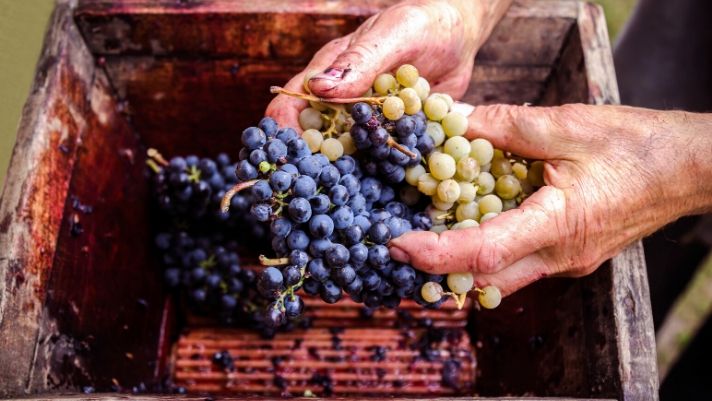
Do you love pouring yourself a nice glass of wine after a stressful day? Is a glass of rosé your go-to beverage when eating at a restaurant? People around the world love wine and all the classiness and good vibes that come with it. But a lot of people don’t know how their wine turns from grape to glass. It’s a process that wine lovers should know, even if just to make your wine mean more when it hits your mouth. Here’s a quick guide on how wine is made—check it out!
Grape Harvest
The delicious nature of the wine you drink starts from the vine. It’s where the grape’s life begins and flourishes, so aspects such as vineyard location, terrain, soil, climate, and vines all factor into the final product. The actual grape harvesting is accomplished either by mechanical harvesting equipment or hand harvesting. Each vineyard has its own preferences but is largely influenced by the final wine style goals.
Destemming and Crushing
Next in the process is the destemming and crushing of the grapes. Now, crushing is not necessary to turn the grapes into a fine paste, as simply splitting the external skin will allow the juice to run. There are two ways this happens: with a heavy-spiraled steel roller or with a grape “stomp.” This is also when grape stems get separated from the juice.
The crushing part of the process is also where the paths of red wine and white wine grapes diverge. If it’s a red wine, then the skins and stems of the grape stick with the wine to provide the color characteristics and higher tannin contributions. If it’s a white wine, then the grape skins are removed along with the stems. Pressing for white wine would also occur before fermentation.
Fermentation
This is one of the most important steps in the winemaking process. During fermentation, the grape’s sugars are converted to alcohol and carbon dioxide. There are tons of different processes for how this occurs, but it’s typically through adding yeast into the vats. For red wine, carbon dioxide causes the grape skins to rise to the surface, and “punching down” has to occur to keep the skins in contact with the juice. How often the “punch down” occurs often implies how “big” the wine will be.
Pressing
As we mentioned, pressing is done right after crushing for white grapes yet occurs after fermentation for red wine grapes. It’s basically taking sticky, leftover grape solids and squeezing them to get a very thick liquid. That liquid is then used to enhance the color and flavor of the soon-to-be wine.
Maturation
The aging process is another important step to the success of the wine. Winemakers have lots of choices for how to go about this, and that often comes from the kind of wine they want to create. They can either:
- Age the wine for several months or years
- Age the wine in stainless steel or oak barrels
- Age the wine in new or used oak barrels
- Age the wine in various levels of ‘toasted’ barrels
Filtration
The final step before bottling is the filtration process. This is basically to clarify the wine and remove unwanted leftover particulates. Filtration removes bigger solids, so the wine is bright and clear rather than cloudy.
Bottling
Now comes the bottling phase! You’ve made it through our guide on how wine is made. It ends with mechanical bottling lines, where the wine is slowly filled and topped with either nitrogen or carbon dioxide to displace any oxygen, as oxidized wine is a common wine fault!
Whether you need some corporate wine gifts or some wine tasting packages for your girls’ night, turn to Wines ‘Til Sold Out. We’re here to give you the best of the best delivered straight to your door. Shop now!



Comments